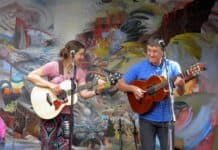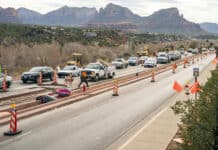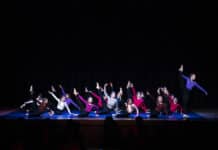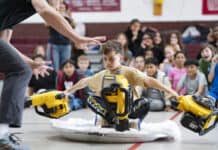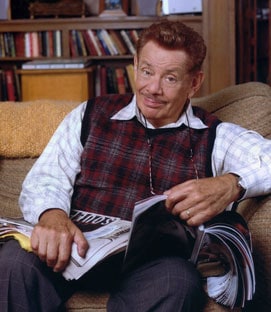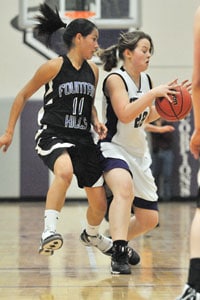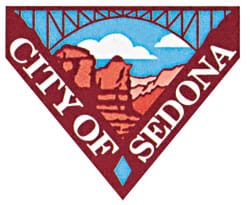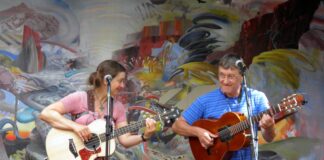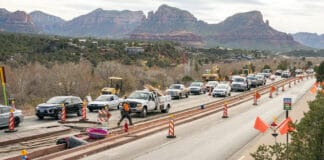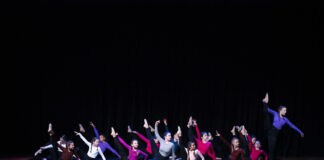A Cottonwood veteran pilot recently talked with a Japanese Zero fighter pilot whom he may have fought against during World War II.
Both men are now in their mid-80s but remember their part in the South Pacific as if it was more recent than nearly 65 years ago, according to Ralph Wandrey’s telling of his visit with Minoru Honda.
Wandrey served in the Army Air Corps. By the time he was discharged in 1947, it had become the U.S. Air Force.
“Honda was stationed at Rabaul in 1943 when I was in New Guinea. It was a big Japanese naval base,” Wandrey said as he looked at photographs of the visit.
Rabaul is on the island of East New Britain, which belonged to Australia. It is off the far eastern edge of Papua New Guinea. Wandrey was stationed at several locations around New Guinea.
Steve Adelsman and his wife, Marta, are Wandrey’s neighbors. Adelsman takes tours to Japan, and one day, Wandrey asked to join him on one.
Wandrey and Honda sat across the table from each other at the Royal Oak Hotel on Lake Biwa near Kyoto, Japan, and talked through an interpreter for three hours. They met at a hotel because Japanese homes are very small, and the hotel provided more room.
Wandrey and Adelsman, who accompanied him to the meeting, froze up for a second at Honda’s first remark. Wandrey always wears his P38 pin. Honda saw it and commented, “I don’t like P38s.” Wandrey found out why during their conversation.
Honda, who joined the military at the age of 17, was the first Japanese Zero fighter pilot to see a P38. He saw the two engines and thought it was a bomber, so he attacked it head-on.
“That was a mistake. He got shot up pretty bad but made it back to his base,” Wandrey said. “It was also P38s that shot down [Fleet Admiral Isoroku] Yamamoto’s plane, the admiral who planned the Peal Harbor raid,” Wandrey said.
Adelsman said he could see throughout the conversation, as Honda recalled the memories so many years later, he was very emotional.
“Yamamoto’s loss was a great tragedy for them,” Adelsman said.
Wandrey and Honda talked about history, the planes and the battles over coffee and Japanese sweets. Wandrey asked a lot of questions, then Honda asked a lot back.
“I learned a lot. Only Army pilots were kamikazes, not the Navy pilots. The Zeros had two 20mm cannon. If I’d known that, I’d been twice as scared,” Wandrey said. “He’d shot down a lot of our planes, and I shot down a lot of theirs.”
Wandrey is an Ace. He got credit for shooting down six Zeros. It takes five to qualify. He recalled one Zero that got away. He took off just
before U.S. bombers hit the airstrip.
“He outsmarted me. I was in a P47 then. I saw this one little Zero fly out toward the ocean. I waited awhile until he was far enough out he couldn’t get back. Then I started diving down on him. He tried to go back but turned around and headed toward a little island,” Wandrey said.
Instead of turning to align with the airstrip on the beach, the pilot headed right and went sideways to a little road that went into the trees. He slid into the jungle leaving his wings behind, broken off by the trees.
“He was smart and slick. Those Zeros were real maneuverable and lightweight. That was their strength,” Wandrey said.
The visit between the two fighter pilots came about through a chain of people. It started when Wandrey decided to return a Japanese flag he found under a bunk in the barracks after the U.S. captured the airfield.
A writer, Henry Sakaida, found out Wandrey had the flag and helped return the flag to the Obara family in Japan.
Sakaida had a friend, Kogi Tahaki — the two wrote a book together about the Japanese side of the war — and Tahaki went to Japan and interpreted for Wandrey and Honda.
“The only Japanese I learned was ‘Domo arrigato,’ — ‘Thank you very much.’ It doesn’t work into the conversation very often,” Wandrey said and laughed, his blue eyes sparkling.
Tahaki told Wandrey he knew of this Japanese Zero pilot. Between Sakaida, Tahaki and Adelsman, the visit got arranged.
“I told Kogi that ever since the war was over I have wanted to meet with a Japanese fighter pilot,” Wandrey said.
Adelsman’s interest in the meeting was a chance to bring two people from opposite sides of World War II together.
“We can either build walls or build bridges. I want to build bridges. That’s what I hope got accomplished through this meeting,” Adelsman said.
Wandrey served in the South Pacific for 21 months.
Wandrey is a member of the Veterans of Foreign Wars Post 7400 in Cottonwood. He marches with the VFW Color Guard for local parades and patriotic events.
Because of his history, Wandrey has been invited to participate in the living history part of the “Thunder in the Desert” celebration at Luke Air Force Base in Phoenix on Sunday, March 22.
Before Wandrey and Honda parted ways, Honda gave Wandrey a Zero pilot’s pin. He pinned it next to his P38 pin.


